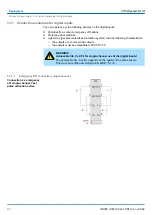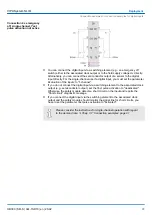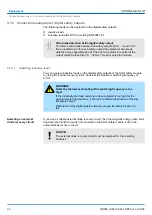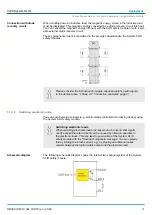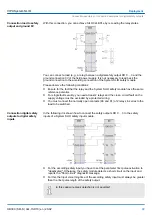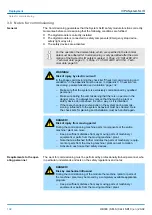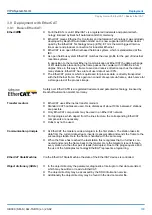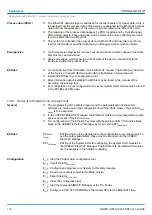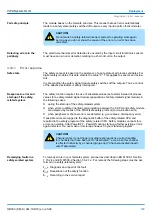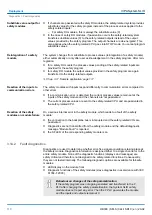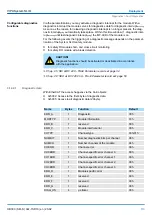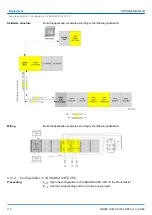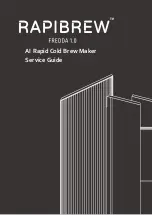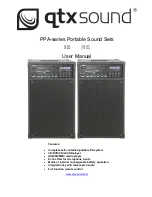
3.9 Deployment with EtherCAT
3.9.1 Basics EtherCAT:
n
For EtherCAT
®
is valid: EtherCAT
®
is a registered trademark and patented tech-
nology, licensed by Beckhoff Automation GmbH, Germany.
n
EtherCAT means Ethernet for Controller and Automation Technology. It was originally
developed by Beckhoff Automation GmbH and is now supported and further devel-
oped by the EtherCAT Technology Group (ETG). ETG is the word biggest interna-
tional user and producer connection for industrial Ethernet
n
EtherCAT is an open Ethernet based field bus system, which is standardized at the
IEC.
n
As open field bus system EtherCAT matches the user profile for the part of industrial
real-time systems.
In opposition to the normal Ethernet communication at EtherCAT the data exchange
of I/O data takes place during the frame passes the coupler with 100Mbit/s in full-
duplex. Since in this way a frame to send and receive direction reaches the data of
many stations, EtherCAT has a rate of user data of over 90%.
n
The EtherCAT protocol, which is optimized for process data, is directly transported
with the Ethernet frame. This again can consist of several sub-frames, which serve for
a storage area of the process image.
Safety over EtherCAT
®
is a registered trademark and patented technology, licensed by
Beckhoff Automation GmbH, Germany.
n
EtherCAT uses Ethernet as transfer medium.
n
Standard CAT5 cables are used. Here distances of about 100m between 2 stations
are possible.
n
Only EtherCAT components may be used in an EtherCAT network.
n
For topologies, which depart from the line structure, the corresponding EtherCAT
components are necessary.
n
Hubs may not be used.
n
At EtherCAT the master sends a telegram to the first station. The station takes its
data from the current data stream, inserts its answer data and sends the frame to the
succeeding station. Here the frame is handled with the same way.
n
When the frame has reached the last station this recognizes that no further is con-
nected and sends the frame back to the master. Here the telegram is sent through
every station via the other pair of leads (full-duplex). Due to the plug sequence and
the use of the full-duplex technology EtherCAT represents a logical ring.
Via the EtherCAT State Machine the state of the EtherCAT devices is controlled.
n
In the object directory the parameter, diagnostics, Interrupt or other data are listed,
which may be written or read via EtherCAT.
n
The object directory may be accessed by the SDO information service.
n
Additionally the object directory may be found in the device master file.
EtherCAT
®
Transfer medium
Communication principle
EtherCAT State Machine
Object dictionary (SDOs)
VIPA System SLIO
Deployment
Deployment with EtherCAT > Basics EtherCAT:
HB300 | SM-S | 02x-1SD10 | en | 20-02
103




